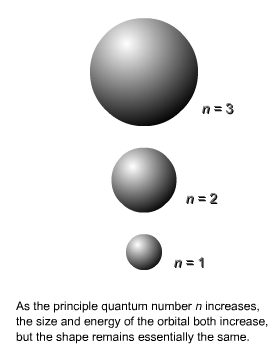|
A
new and better quantum theory was developed in the 1920's by an
Austrian and a German physicist, Erwin Schrodinger and Werner Heisenberg.
Their wave mechanics is mathematically intimidating, and
almost seems to view the world as a set of solutions of differential
equations. It succeeded in explaining the structure of multielectron
atoms, the structure of the Periodic table, and the theory of bonding
between atoms in molecules - impressive accomplishments for any
theory. The picture of atoms and molecules that resulted is essentially
that which we use today. We will make use of the results of wave
mechanics - energy levels and atomic structure - without going through
the mathematics that led to those results. |

|